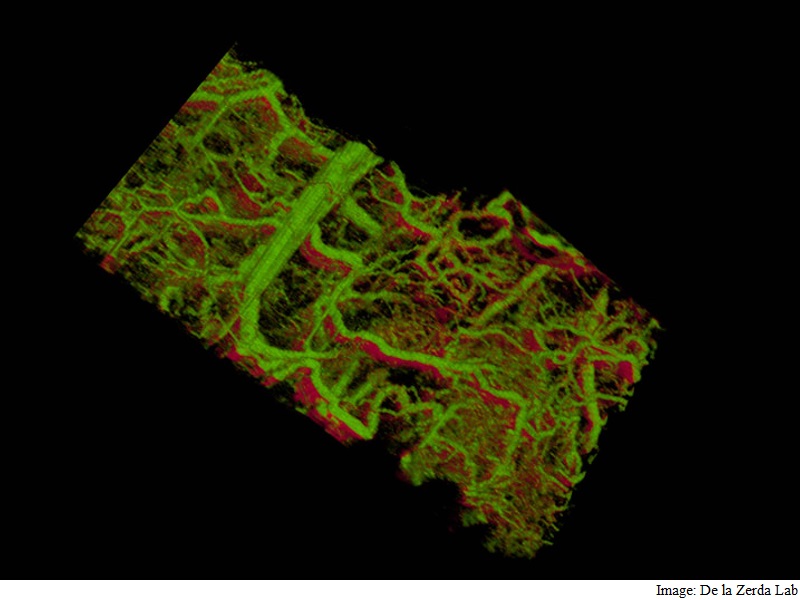Scientists Develop Technique for Viewing Cells and Tissues in 3D Under the Skin
Victoria White | March 21, 2016
The new technique, called MOZART, could one day allow scientists to detect tumours in the skin, colon or oesophagus, or even to see the abnormal blood vessels that appear in the earliest stages of macular degeneration.
 |
| New Technique Developed for 3D Imaging of Cells Under Your Skin. Source: http://gadgets.ndtv.com/science/news/new-technique-developed-for-3d-imaging-of-cells-under-your-skin-816301 |
<more at http://www.drugtargetreview.com/11025/content-type/industry-news/viewing-cells-3d-skin-nanorods/; related links and articles: http://gadgets.ndtv.com/science/news/new-technique-developed-for-3d-imaging-of-cells-under-your-skin-816301 (New Technique Developed for 3D Imaging of Cells Under Your Skin. March 21, 2016) and http://techfinder.stanford.edu/technology_detail.php?ID=31535 (MOZART: High-resolution optical molecular imaging system for medical and biological imaging applications. April 27, 2015. [Abstract: Dr. Adam de la Zerda and colleagues have developed an imaging system and method, known as MOZART, which provides real time visualization of individual cells within a living tissue, healthy or diseased, as the biology progresses. Existing clinical imaging systems (e.g. X-ray, ultrasound, MRI, PET) used to detect cancer provide low resolution images of large body areas to detect abnormal looking tissue. They require highly skilled radiologists to interpret the images and even so inaccurate results can be obtained. Furthermore, these systems are not adequate to identify drug resistance or monitor treatment. As such there is a need for molecular imaging systems that can detect and characterize individual cells and biological processes within the body in a fast, minimally invasive manner. To help meet this need the inventors have developed the MOZART system. It provides the unprecedented ability to visualize molecular information in live subjects at single cell resolution and multi-millimeter depth of penetration. MOZART will revolutionize molecular imaging and provide many new pre-clinical and clinical imaging opportunities.])>

No comments:
Post a Comment